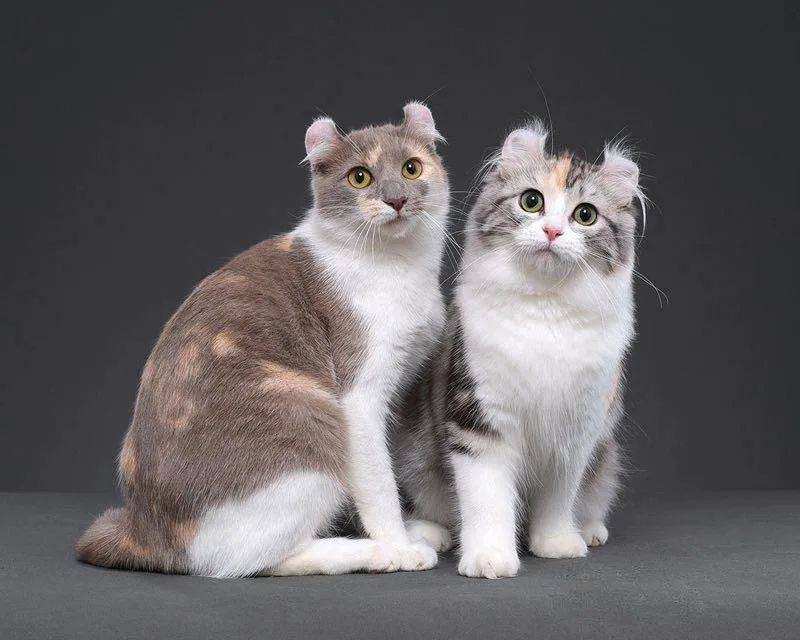American Curl
IUCN
LCBasic Information
Scientific classification
- name:American Curl
- Scientific Name:Curl-eared cat, Fold-eared cat
- Outline:Carnivora
- Family:Felidae
Vital signs
- length:40-50cm
- Weight:3-5kg
- lifetime:14-17year
Feature
Cat with curled ears
Distribution and Habitat
Native to California, USA
Appearance
The head is a gentle wedge, not flat, slightly longer than wide, and very smooth. The nose is medium length and straight in profile, slightly higher from the base of the eyes to the forehead, and slightly curved on top, extending to the neck without interruption. The size of the head is medium compared to the body. The muzzle is rounded and smooth, without obvious whisker pads. The chin is strong and in line with the nose and upper lip. The eyes are almond-shaped, oval on top and rounded at the bottom. They are set wide and slightly angled from the line from ear to nose tip. Medium size. The color is clear and bright, and the eye color is irrelevant to the coat color except for the key color group, which requires blue eyes. The ears are broad at the base, and the ears are rounded and soft at the tips when viewed from the front and rear. Medium size, erect and symmetrical on both sides of the head. The body is slightly rectangular, with the body length being one to one and a half times
Details
The American Curl is a cat with curled ears. This is not a physiological defect, nor is it artificially caused, but rather a result of genetic mutation.

The American Curl originated in California, USA. Legend has it that in 1981, a female black cat in southern California was covered with soft and smooth long hair and had a graceful body, but its ears were curly. Later, it was adopted by a couple and gave birth to a litter of kittens, two of which had curly ears like its mother. This is the ancestor of the American Curl cat. However, it was not until 1983 that the breed was selected and bred, and it became a rare new member of the cat world. At the beginning, the incidence of curled ears was only 50%. (After generations of stable pedigree genes, the incidence of curled ears in kittens born from purebred American Curl cats and purebred American Curl cats has basically reached 100%.) At birth, the appearance is no different from ordinary cats. After 4-7 days of birth, it gradually begins to change and form curled ears, and it is fixed after four months. The coquettish personality that matches the appearance has generally increased in popularity. In 1983, American breeder Nancy took the curled ear cat to a cat show for the first time, which received good reviews and began the breeding process. Regardless of the color of the fur and the length, the ears of the American Curl cat are always curled and decorated with hair, which is very beautiful. The cartilage of the curled ears feels firm. There are three degrees of curling of the curled ears: mild, partial and crescent (best). Purebred American Curl kittens are born with normal ears, which curl noticeably between 4 and 7 days after birth until they are fixed four months later.
In 1983, Roy Robinson, a famous feline geneticist from the UK, analyzed data from 81 litters of 383 kittens. He confirmed that the ear curl gene is unique and that it is an autosomal dominant gene, meaning that any cat with even one copy of the gene will show the trait. In an article published in the December 1989 issue of Genetics magazine, he reported that his analysis of genetic DNA did not find any defects, laying the foundation for a new healthy breed that was recognized and registered by TICA (The International Cat Association). In 1986, CFA (The Cat Fanciers' Association) accepted the registration. In 1993, the first time that the same breed and two coat lengths could win the championship title at the CFA (The Cat Fanciers' Association International Cat Federation) Championship, but both long-haired and short-haired cats were classified as long-haired cats in the competition. In 1995, there were 223 purebred American Curl cats registered with CFA (The Cat Fanciers' Association International Cat Federation), ranking 25th among the 37 recognized cat breeds at the time. In 2010, CFA (The Cat Fanciers' Association International Cat Federation) banned American Curl cats from mating with other breeds to increase their bloodline purity. According to the latest statistics in 2012, the number of American Curl cats registered with CFA, TICA, GCCF and other international cat associations worldwide does not exceed 10,000. (Quoted from the introduction statistics of the fourth episode of CCTV's "Cute Pet Growth").
The American Curl is very curious and is known as an urban explorer. It is a good companion and suitable for all families. It has a stable and smart personality, and the behaviors it has when it is a kitten will remain throughout its life. American Curl cats don't like to talk much, but they know how to tell you what they need. It can also get along well with other pets in the house.
Protect wild animals and eliminate game.
Maintaining ecological balance is everyone's responsibility!








